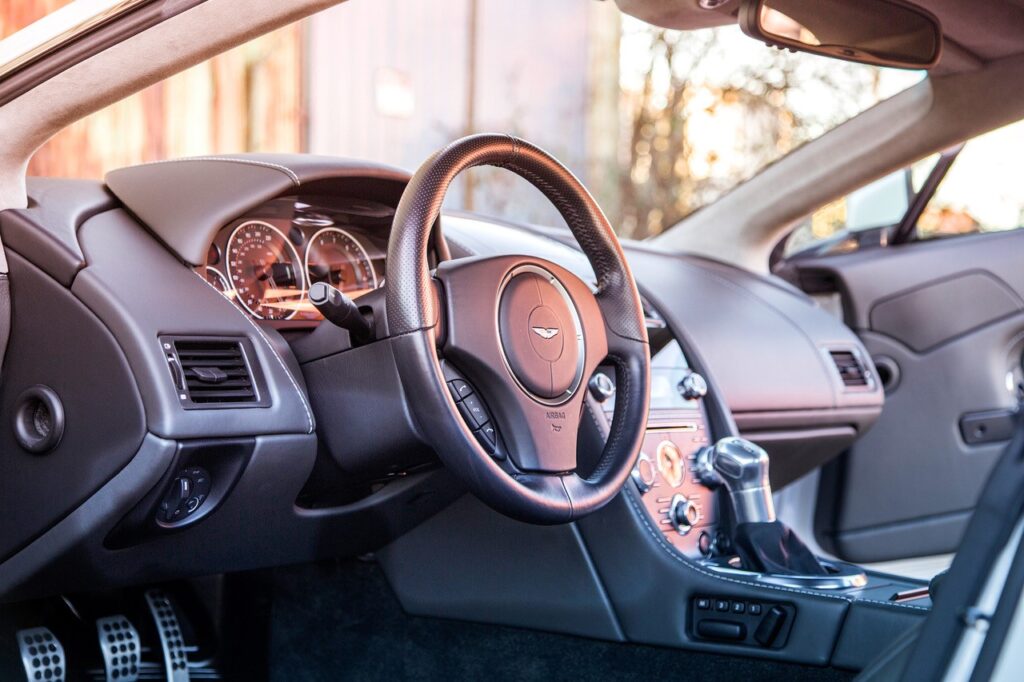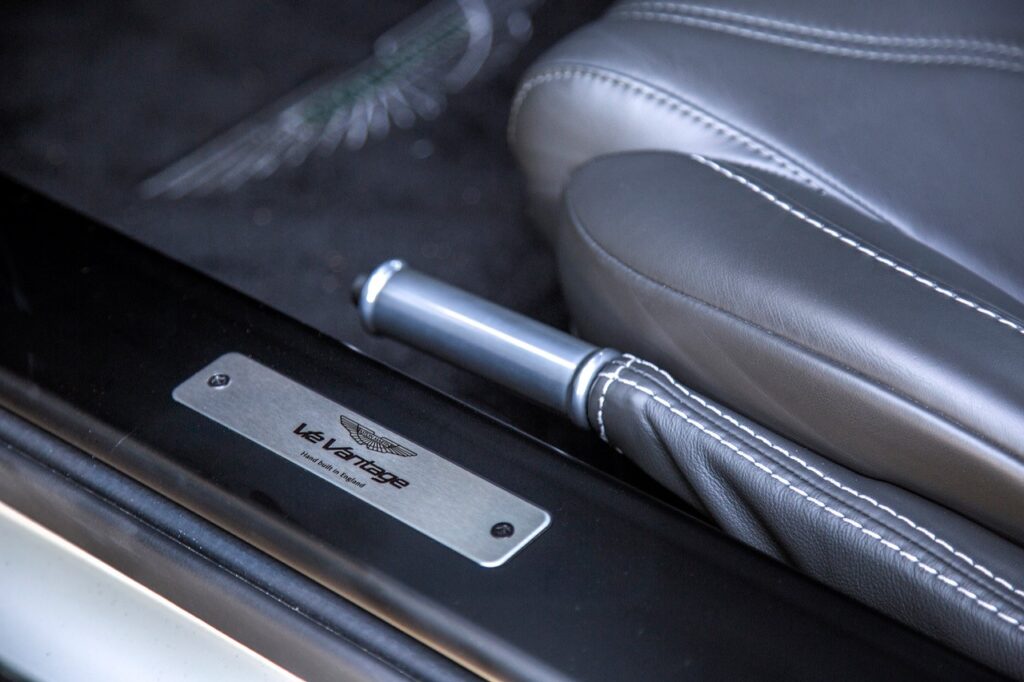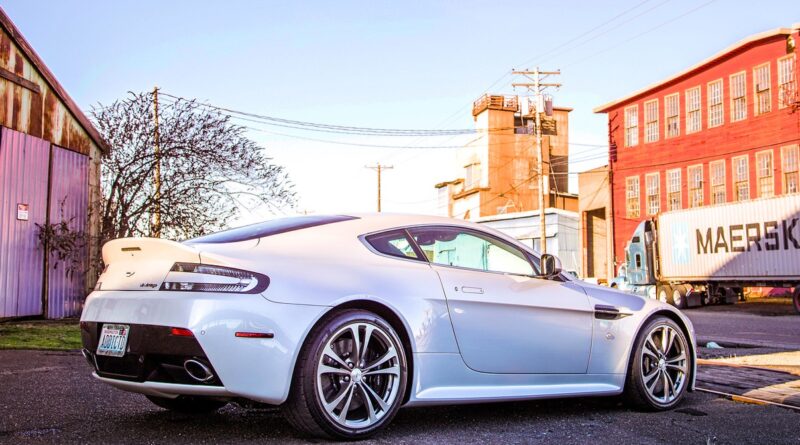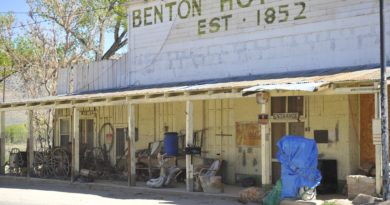The Investigator
Ever felt like a detective? Rustling around, digging into piles of stuff, putting your nose into things where it might not belong, maybe where no one wants you. I love old stories someone has found out about by stumbling onto a fact or two, an article, a photo. Sometimes it sufficiently piques their interest that a whim turns into a project; a real, serious, time-consuming project. For months or even years. I don’t think I’m there yet, and maybe never will be. At least, not in a totally focused, to the exclusion of all else kind of way. My little investigator inclination usually gets activated when I get ticked off about something, like a bank screwing me over or, even worse, something about my car. Especially my special car.
I find myself asking, “How special is my car, really?” I’ve had it for 11 years now. While the Aston Martin will remain special to me, I certainly look at it differently than when I was first able to afford one. I hate to say it, but ‘jaded’ is a word that unavoidably comes to mind. Not that I feel that way, really. But how I feel now is definitely different than the first day of a truly exhilarating, almost otherworldly sense of it all not being real – it was the actualization of a dream. The newfound wealth, as a by-product of the dream and giving myself entirely to doing something really well, to taking risks and being rewarded for the good fortune of success, had brought me to a place I hadn’t thought about. But the surreal high of that moment was just that – a passing moment in time.
In the sense of this car being relatively rare, it is special. Only 1,098 of the car I own were built, fewer than the Ferrari F40. It is also rare in its marvelous appeal to people who love cars. It’s very high performance, it’s beautiful, but it’s not flamboyant like a Ferrari or a Lamborghini. It has an ambiance when you get into it. It still possesses the aroma of expensive leather, which is everywhere, even in the door sills. Everything is understated and finely crafted. After experiencing a drive in this car, everything else is something less – less refined, less exciting, less engrossing. Going out in this car is always, always an occasion.

All that said, it is not a million-dollar hypercar. It is capable of 205 mph, but it doesn’t have the presence or the hutzpah of a McLaren or some other car that exudes drama and daring when you set eyes upon it. This car isn’t about that; so, while its rare, expensive and beautiful, it’s not on the cutting edge. It’s just a beautiful, exciting car to drive. It has indications of becoming a true collector car, but it’s not fully there yet. After all that, hopefully you understand why I get so caught up about things that go wrong with this car, and what has sent me down the detective trail.
I’ve been learning about Aston Martins since the day I first bought one 15 years ago. The company history, the racing pedigree, the people and the characters, the dealerships, the aftermarket suppliers and, best of all, the owners. But from the moment my beautiful Morning Frost White V12 Vantage shattered an exhaust valve spring 18 months ago, I have been learning something valuable – that despite its cost and status, Aston’s are still just cars. As such, they all have unique flaws, design compromises, and shortcomings. In the case of a car like this, those can be expensive to fix and even more expensive to chase.
You may have read my posts about the experience – The Best Laid Plans, A Reward for Patience and The Final Chapter. But what I learned during this fiasco was unfortunately not all that surprising. First, I learned parts and engine support isn’t what we’re used to from the big car companies. A part can take many months to show up. But that’s nothing compared to the issues surrounding the engine they build for this car. It’s a big V12 with a long history of durability and performance. But it also has issues that are not commonly known.
In my initial search for solutions to my broken valve spring, which by the way often indicates a much more serious problem lurking deep in the engine’s bowels, I found that sourcing a rebuilt motor was not as it initially appeared. I was told Aston’s engine plant in Cologne, Germany had a rebuilt engine I could buy. I was also told this was unusual, as they did not often do rebuilds and it usually took many months to get one. Further digging led me to someone who helped integrate this engine into the models at Aston Martin (the engine was originally developed for Aston by Ford). He said the quality of the rebuilds was not as good as the originals and didn’t recommend one for the price being asked (a ridiculous $40,000+). There were rumors of engines available occasionally for about $17,000. Where to find one was the problem.
I kept calling and talking to people and was able to connect with Greg Nels in Scottsdale, AZ. He took the car, did some investigation and got it running within a few days of taking it on. In addition, I added a few Velocity AP performance toys, like an ECU remap, new clutch & lightweight flywheel, headers and exhaust. While there, however, a couple of previously unknown problems surfaced. An error to the Dynamic Stability Control and ABS systems arose and could not be immediately isolated. I made what looking back may have been a mistake in patience. Greg had contacted Aston Martin England for assistance. But I was impatient to get the car back, and my thinking at the time was a dealer would probably get better response, so I ferried the car to my local Aston mechanic in Bellevue, WA. They thought it would be simple. I said I didn’t expect to see it for a couple of months, so no problem. They laughed and said it wouldn’t take that long. The laugh was on me. The car was there for five months… and the problem was only partly solved after several thousand dollars of work. It was back a month later when they replaced platinum spark plugs and coil packs to the tune of another five grand. Still the error codes persisted.


The all leather interior of the V12 Vantage. Even the steering column is leather. The door sill nameplate and handbrake (polished aluminum and leather). (c) Griots Garage
During this time I found out more about the V12. First off, there was what was characterized to me as an informal tech bulletin from Aston Martin recommending replacement of the PCV valves and re-routing of the related tubing to help prevent oil starvation to the aft-most part of the engine, cylinders 6 and 12. Rather than publish a bulletin or recall on the work, however, Aston Martin just strongly recommended V12 Vantage owners be vigilant in keeping the oil reservoir full, as excessive oil consumption was a symptom of needed PCV replacement. But this really was only part of the problem.
Further investigation revealed an oil gallery for cylinders 6 and 12 could also be subject to partial blockage by minute rotational migration of a bearing over the course of hundreds of cold starts, thereby increasing wear on those cylinders and the possibility of oil starvation resulting in a catastrophic failure. The solution? Cycling the starter motor several times in 5 second increments in a start by-pass mode. This would circulate oil to all parts of the engine prior to starting, reduce wear and keep the bearing from migrating. The by-pass mode is described in videos on a couple of Aston Martin enthusiast websites. The by-pass mode is initiated by simultaneously fully depressing the clutch and accelerator pedals while depressing the key and cycling the starter motor. Each 5-second burst is started and stopped by depressing and releasing the clutch pedal, not the key. This sequence is repeated several times until the oil circulation light goes out on the dash. Then, the accelerator pedal can be released which will allow the engine to start. Simple really, but only engines with a Ford ECU can be started this way. Later models do not have this feature. I now start my vehicle for the first time each day this way. The wisdom of this method seems to be borne out in the evidence.
To eliminate the error codes, I resorted to taking my car from the dealer to an Aston performance specialist, Velocity AP in British Columbia. They solved the problem in quick order by simply driving the car in what’s termed a re-learning sequence for the ECU. This sequence requires repeated coasting from 70 mph to 30 mph while the steering wheel is held within 10 degrees of straight. It eliminates misfires and associated error codes. For some reason, the dealer did not perform this step after the coils and plugs were replaced. The looks I saw the guys at Velocity give each other told me they didn’t understand why the dealer missed such a basic task.
While performing due diligence prior to the re-learn, VAP took compression tests of my engine. All the cylinders were excellent, except cylinder 6. It was down about 25% from the others, which is significant. I asked about it and the answer was no secret – probably excessive ring wear due to poor oil circulation. Go figure. Exactly as predicted, yet never openly communicated to Aston owners. Yet, that compression result may still be inconclusive. In further discussions with an Aston mechanic whom I respect, he noted there are conditions during manual compression checks where the cylinder wall can become stripped of oil, resulting in artificially low readings. Not widely known at this time is also a new software driven, electronic technique for determining compression. It sounds fascinating and it could mean the jury is still out.
One day in the not-too-distant future I may be looking at a rebuild that could easily climb into the five-figure range. But I’m also intrigued by this new compression test method and want to see how it works. Something to look forward to.
Either way, if you have an Aston AM10 V12 engine, or one that has a Ford rather than the later Bosch Engine Management System, follow the advice above for starting your engine. There’s good reason to believe it could save you in the long run.




